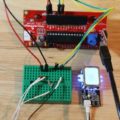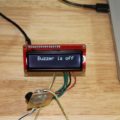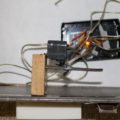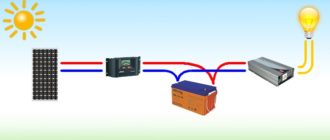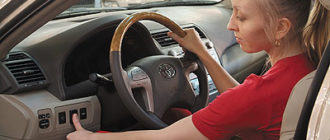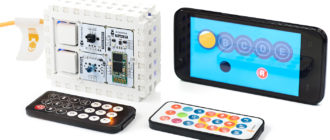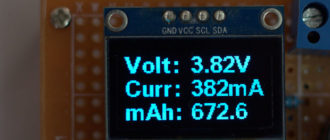Содержание
Этап 8: Окончательный код для ATmega328
Ниже приведена программа модуля Arduino, которая написана для совместной работы датчика отпечатков пальцев и ЖК-дисплея. В текст программы вставлены комментарии автора, чтобы было понятно, зачем какая-то часть кода нужна, и не возникало много вопросов.
После того, как код для ATmega328 будет загружен, собранное устройство сможет работать как часы!
Код для ATmega328:
/**
*FPSGarageDoorOpenner
*/
#include "LiquidCrystal.h" //for the screen
#include "FPS_GT511C3.h" //the fps (fingerprint scanner) library
#include "SoftwareSerial.h" //used by fps library
//Setting up the pins for the LCD and the fps
LiquidCrystal lcd(2, 3, 4, 5, 6, 7, 8); //pinouts for LCD
FPS_GT511C3 fps(10, 11); //RX, TX
boolean isFinger = false; //true if the fps detects a finger on the scanner
//output pins
const int buzzerPin = 13;
const int backlightPin = 9;
const int attinyPin = 12;
const String idNames[] =
{
"self","Bro", "Ryan", "Mom", "Dad", "Auntie", "Grandma", "Zeide", "Person", "person", "Thumb"};
void setup(){
//set outputs
pinMode(buzzerPin, OUTPUT);
pinMode(backlightPin, OUTPUT);
pinMode(attinyPin, OUTPUT);
//for debugging
//Serial.begin(9600);
fps.UseSerialDebug = false; //set to true for fps debugging through serial
//initializing the libraries
lcd.begin(16,2);
digitalWrite(backlightPin, HIGH); //the LCD backlight
fps.Open();
fps.SetLED(true); //the fps LED
//boot up sound
for(int i=0; i<30; i++){
tone(buzzerPin, 50+10*i, 30);
delay(30);
}
tone(buzzerPin, 350);
//print starting message
lcd.print("Put your finger "); //the command to print to the LCD
lcd.setCursor(0, 1); //sets the cursor to the 0th column in the 1st row
lcd.print(" on the scanner ");
delay(150);
noTone(buzzerPin); //stops the startup sound
}
void loop(){
//scan and identify the finger when one is put on it
waitForFinger();
lcd.clear(); //clears the screen and sets the cursor to 0,0
fps.CaptureFinger(false); //captures the finger for identification
int id = fps.Identify1_N(); //identifies print and stores the id
if(id <= 10){
lcd.print(" Access granted "); //success message
lcd.setCursor(0,1);
//prints name when the garage is opening
String message = " Hey " + idNames[id] + "!";
lcd.print(message);
tone(buzzerPin, 262, 1000);
delay(1500);
//sends a signal to open the garage door
digitalWrite(attinyPin, HIGH); //first pulse syncs the delays (10ms)
delay(5);
digitalWrite(attinyPin, LOW);
delay(3);
digitalWrite(attinyPin, HIGH); //next two open the garage
delay(15);
digitalWrite(attinyPin, LOW);
delay(5);
digitalWrite(attinyPin, HIGH);
delay(10);
digitalWrite(attinyPin, LOW);
delay(1000);
lcd.clear();
lcd.print("Don't forget to ");
lcd.setCursor(0,1);
lcd.print(" shut me off! ");
delay(2000);
waitForFinger(); //tap to continue to enroll
while(true){ //save a new fingerprint
//prints message to lcd
lcd.clear();
lcd.print(centerText("So you want to"));
lcd.setCursor(0,1);
lcd.print(centerText("scan a new one?"));
delay(2000);
//Copied and slightly modified from the enroll example:
int enrollid = 11;
//choosing which id to overwrite/create
//release your finger when you want to write to the id/name printed on the screen
waitForFinger(); //waits for the fps to be pressed
while(enrollid==11){
for (int i = 1; i<=10; i++){
if((fps.IsPressFinger() == true)){
lcd.clear();
String str = "ID " + String(i) + ": " + idNames[i]; //concats a string w/the id
lcd.print(centerText(str));
delay(1000);
}
else if(i>1){
lcd.print(i);
enrollid = i-1;
break;
}
}
}
//warning if there is already data in this id slot
if(fps.CheckEnrolled(enrollid)){
lcd.clear();
lcd.print(" Warning! ID #");
lcd.print(enrollid);
lcd.setCursor(0,1);
lcd.print(" has data. OK? ");
delay(2500);
waitForFinger(); //waits for the fps to be pressed
fps.DeleteID(enrollid); //delete data
delay(100);
}
//Enroll
fps.EnrollStart(enrollid);
lcd.clear();
lcd.print("Place finger to ");
lcd.setCursor(0,1);
lcd.print("enroll #");
lcd.print(enrollid); //prints id that is being enrolled
waitForFinger(); //waits for the fps to be pressed
//captures the finger and saves to memory three times for accurate data
bool bret = fps.CaptureFinger(true); //high quality pic for enrollment
int iret = 0; //error stuff
if (bret != false){ //first enroll
lcd.clear();
lcd.print(" Remove finger ");
fps.Enroll1();
while(fps.IsPressFinger() == true) delay(100); //waits until no finger
lcd.clear();
lcd.print(" Press again ");
waitForFinger(); //waits for the fps to be pressed
bret = fps.CaptureFinger(true);
if (bret != false){ //second enroll
lcd.clear();
lcd.print(" Remove finger ");
fps.Enroll2();
while(fps.IsPressFinger() == true) delay(100);
lcd.clear();
lcd.print("Press yet again ");
waitForFinger();
bret = fps.CaptureFinger(true);
if (bret != false){ //third enroll
iret = fps.Enroll3();
if (iret == 0){ //checks to see if there are any errors
lcd.clear();
lcd.print(" Success! ");
delay(2000);
beep(); //shuts arduino off
}
else{ //if the enrollment fails in any way
lcd.clear();
lcd.print("Fail. Try again ");
delay(1000);
}
}
lcd.clear();
lcd.print(" Failed 3rd "); //error on 3rd
delay(1000);
}
lcd.clear();
lcd.print(" Failed 2nd "); //error on 2nd
delay(1000);
}
lcd.clear();
lcd.print(" Failed 1st "); //error on 1st
delay(1000);
}
}
else{
lcd.print("Fingerprint is"); //if print isn't recognized
lcd.setCursor(0,1);
lcd.print(" unverified ");
delay(2000);
lcd.clear();
lcd.print("Please try again");
lcd.setCursor(0,1);
lcd.print("Use your pointer"); //I scanned everyone's pointer finger
delay(500);
}
delay(250);
}
void beep(){
//beeps in hopes of someone closing the case
lcd.clear();
lcd.print("Please close the");
lcd.setCursor(0,1);
lcd.print(" case! ");
for(int i=0;i<8;i++){
tone(buzzerPin, 262, 500);
delay(1000);
}
delay(5000); //wait for someone to close the case
//if no one does, shut everything off
lcd.clear();
digitalWrite(backlightPin, LOW);
fps.SetLED(LOW);
while(true) delay(10000);
}
void waitForFinger(){
static int timer; //contains timeout counter
timer = 0; //resets the timer everytime this function starts
while(!fps.IsPressFinger()){ //timeout of eight seconds
timer++;
delay(100);
if (timer>=80 && !fps.IsPressFinger()){
beep();
}
}
timer = 0; //resets the timer everytime this function ends
}
String centerText(String s) { //centers text on the LCD to look better
while(16-s.length()>1){ //if the text needs to be centered
s = " " + s + " "; //creates space on both sides evenly
}
return s;
}FPSGarageDoorOpenner.ino – СКАЧАТЬ
Этап 9: вырезание крышки на 3D принтере
Чертежи крышки сканера выложены в файлах:
Включается сканер, когда внешнюю крышку снимают вверх, освобождая концевой выключатель. Как видно на фото, у концевого выключателя подключены провода к среднему выводу C, а также нормально замкнутому NC.
Окончательно все собранные платы приклеиваются к крышке силиконовым клеем. Микровыключатель должен располагаться в крышке под небольшим наклоном, чтобы его легче было нажимать.
Этап 10: Подготовка гаража
Открываются подъемные ворота гаража от управления ATtiny85 так же, как при помощи обычной кнопки. Только вместо того, чтобы физически замыкать контакты, ATtiny дает команду на открытие NPN транзистора.
В первую очередь нужно отмерять провода по длине от устанавливаемого сканера до привода гаражных ворот, взять с запасом на длину ладони и отрезать. Затем кропотливая работа: припайка проводов от привода ворот к сканеру отпечатков пальцев (есть наглядные изображения в виде анимации GIF). Провода нужно замотать изоляционной лентой в несколько слоев.
Модуль дисплея ATmega с датчиком отпечатков пальцев будет находиться снаружи, а плата управления с процессором ATtiny внутри гаража, поэтому чтобы передать сигнал потребуется провести через стену три провода: питания, заземления и сигнальный. Хорошо, когда в стене есть деревянный брусок, тогда не надо беспокоиться о дополнительной изоляции.
Наконец-то можно прикрутить собранное устройство к стене!
ПРЕДЫДУЩИЙ ЭТАП – Настройка сканера и программирование микроконтроллера
ДАЛЕЕ: Этап 11 / 12/ Тестирование
 bogorod-stroy.ru
bogorod-stroy.ru













